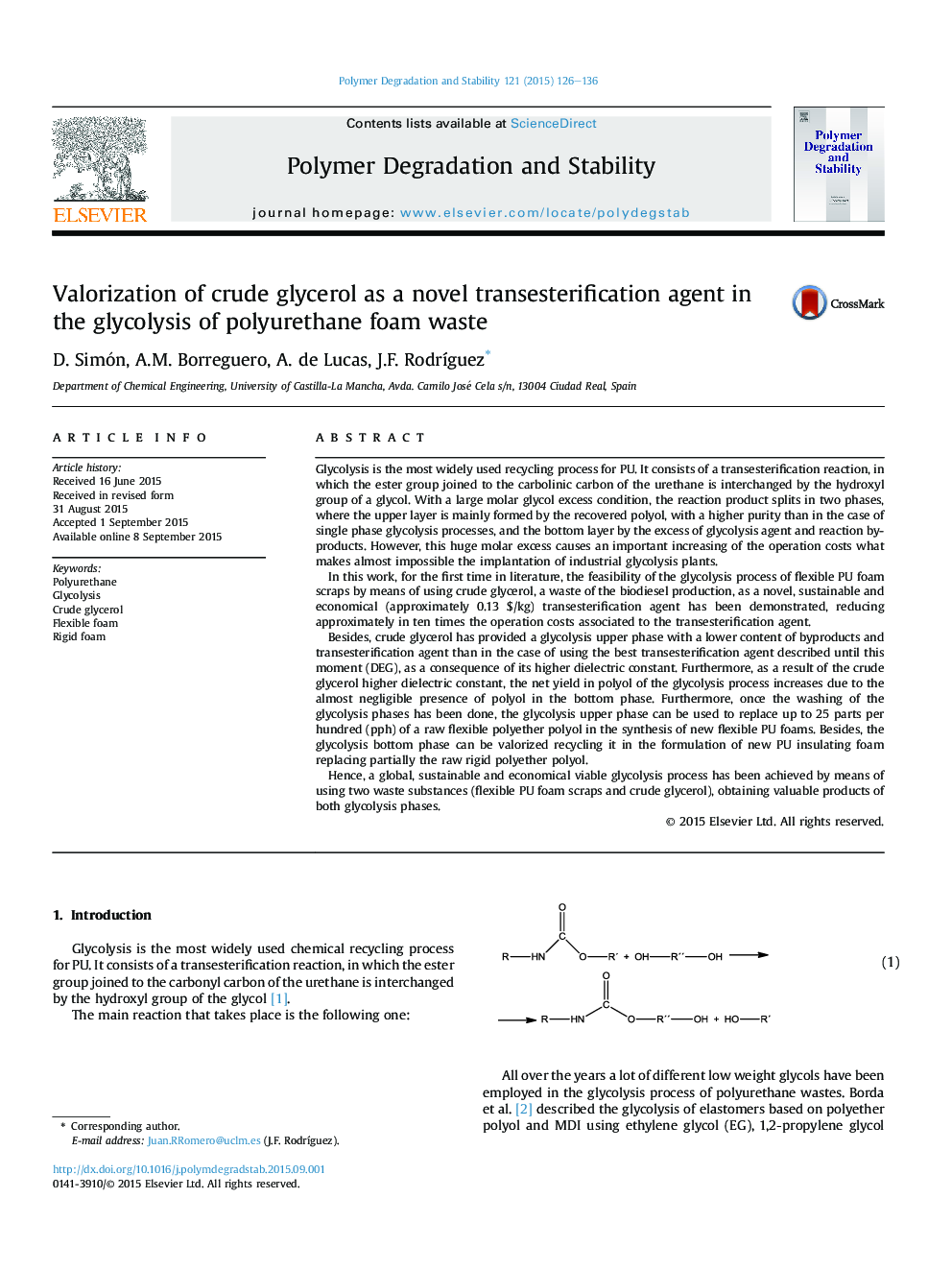| کد مقاله | کد نشریه | سال انتشار | مقاله انگلیسی | نسخه تمام متن |
|---|---|---|---|---|
| 5201373 | 1502892 | 2015 | 11 صفحه PDF | دانلود رایگان |
Glycolysis is the most widely used recycling process for PU. It consists of a transesterification reaction, in which the ester group joined to the carbolinic carbon of the urethane is interchanged by the hydroxyl group of a glycol. With a large molar glycol excess condition, the reaction product splits in two phases, where the upper layer is mainly formed by the recovered polyol, with a higher purity than in the case of single phase glycolysis processes, and the bottom layer by the excess of glycolysis agent and reaction by-products. However, this huge molar excess causes an important increasing of the operation costs what makes almost impossible the implantation of industrial glycolysis plants.In this work, for the first time in literature, the feasibility of the glycolysis process of flexible PU foam scraps by means of using crude glycerol, a waste of the biodiesel production, as a novel, sustainable and economical (approximately 0.13Â $/kg) transesterification agent has been demonstrated, reducing approximately in ten times the operation costs associated to the transesterification agent.Besides, crude glycerol has provided a glycolysis upper phase with a lower content of byproducts and transesterification agent than in the case of using the best transesterification agent described until this moment (DEG), as a consequence of its higher dielectric constant. Furthermore, as a result of the crude glycerol higher dielectric constant, the net yield in polyol of the glycolysis process increases due to the almost negligible presence of polyol in the bottom phase. Furthermore, once the washing of the glycolysis phases has been done, the glycolysis upper phase can be used to replace up to 25 parts per hundred (pph) of a raw flexible polyether polyol in the synthesis of new flexible PU foams. Besides, the glycolysis bottom phase can be valorized recycling it in the formulation of new PU insulating foam replacing partially the raw rigid polyether polyol.Hence, a global, sustainable and economical viable glycolysis process has been achieved by means of using two waste substances (flexible PU foam scraps and crude glycerol), obtaining valuable products of both glycolysis phases.
Journal: Polymer Degradation and Stability - Volume 121, November 2015, Pages 126-136
